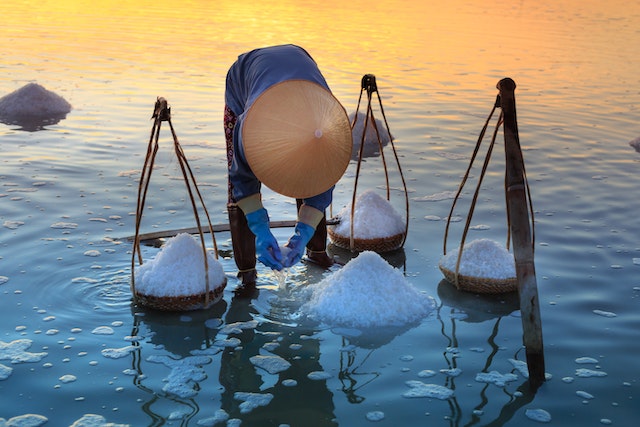Sea Salt For Cooking | What is Sea Salt?

Iodized salt, also known as table salt, is obtained from the ground, while sea salt is obtained by evaporating seawater. The two types of salt contain the same amount of sodium, but sea salt can be considered healthier because it contains more minerals than regular salt. However, these amounts are negligible.
Effects on health:
Iodine is a nutrient that supports thyroid health and is found in iodized salt. Pregnant ladies can benefit from it as well. Some argue that sea salt is more natural, contains more minerals, and is therefore more beneficial to health. It contains iron, sulphur and magnesium, but the difference is so small as to be negligible.
Nutrition:
It is imperative to note that sea salt and iodized salt contain the same amount of sodium and their daily consumption should not exceed 1500 milligrams.
Types
It is available in many types and at different prices, such as Oregon royal salt, French Fleur de Sel it, smoked sea salt, Chardonnay sea salt, grey sea salt, sea flake, Celtic sea salt, and Himalayan pink sea salt.
Advantages and disadvantages:
Iodized salt is much cheaper and contains iodine, which is essential for thyroid health. Iodine deficiency is common among Americans. However, some people claim that it tastes awful and that they do not like the anti-adhesive properties of the diatomaceous earth contained in the sand.
Sea salt is considered healthier, but it costs more and the difference is minimal. It has a richer texture and flavour, but can be lost in cooking.
Taste and use:
Because it is less processed, it can have a crunchier and spicier taste than iodized salt. However, sea salt can lose its flavour and colour when cooked or dissolved and, due to the presence of other minerals, tastes less salty than table salt.
Iodised salt is more suitable for baking because its fine grains dissolve quickly.
Popularity:
It is becoming increasingly popular, especially in restaurants, due to its healthy and natural appearance.
Cost:
Iodised salt is cheaper than sea salt. Iodised salt costs USD 0.49/kg, while sea salt can cost up to USD 0.79. Himalayan sea salt costs USD 39.40 per kg.